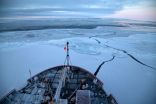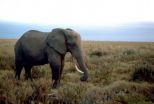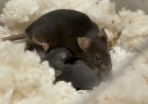(Press-News.org) New research by NOAA, University of Alaska, and Woods Hole Oceanographic Institution in the journal Oceanography shows that surface waters of the Chukchi and Beaufort seas could reach levels of acidity that threaten the ability of animals to build and maintain their shells by 2030, with the Bering Sea reaching this level of acidity by 2044.
"Our research shows that within 15 years, the chemistry of these waters may no longer be saturated with enough calcium carbonate for a number of animals from tiny sea snails to Alaska King crabs to construct and maintain their shells at certain times of the year," said Jeremy Mathis, an oceanographer at NOAA's Pacific Marine Environmental Laboratory and lead author. "This change due to ocean acidification would not only affect shell-building animals but could ripple through the marine ecosystem."
A team of scientists led by Mathis and Jessica Cross from the University of Alaska Fairbanks collected observations on water temperature, salinity and dissolved carbon during two month-long expeditions to the Bering, Chukchi and Beaufort Seas onboard United States Coast Guard cutter Healy in 2011 and 2012.
These data were used to validate a predictive model for the region that calculates the change over time in the amount of calcium and carbonate ions dissolved in seawater, an important indicator of ocean acidification. The model suggests these levels will drop below the current range in 2025 for the Beaufort Sea, 2027 for the Chukchi Sea and 2044 for the Bering Sea. "A key advance of this study was combining the power of field observations with numerical models to better predict the future," said Scott Doney, a coauthor of the study and a senior scientist at the Woods Hole Oceanographic Institution.
A form of calcium carbonate in the ocean, called aragonite, is used by animals to construct and maintain shells. When calcium and carbonate ion concentrations slip below tolerable levels, aragonite shells can begin to dissolve, particularly at early life stages. As the water chemistry slips below the present-day range, which varies by season, shell-building organisms and the fish that depend on these species for food can be affected.
This region is home to some of our nation's most valuable commercial and subsistence fisheries. NOAA's latest Fisheries of the U.S. report estimates that nearly 60 percent of U.S. commercial fisheries landings by weight are harvested in Alaska. These 5.8 billion pounds brought in $1.9 billion in wholesale values or one third of all landings by value in the U.S. in 2013.
The continental shelves of the Bering, Chukchi and Beaufort Seas are especially vulnerable to the effects of ocean acidification because the absorption of human-caused carbon dioxide emissions is not the only process contributing to acidity. Melting glaciers, upwelling of carbon-dioxide rich deep waters, freshwater input from rivers and the fact that cold water absorbs more carbon dioxide than warmer waters exacerbates ocean acidification in this region.
"The Pacific-Arctic region, because of its vulnerability to ocean acidification, gives us an early glimpse of how the global ocean will respond to increased human-caused carbon dioxide emissions, which are being absorbed by our ocean," said Mathis. "Increasing our observations in this area will help us develop the environmental information needed by policy makers and industry to address the growing challenges of ocean acidification."
INFORMATION:
AUSTIN, Texas -- Researchers in the Cockrell School of Engineering at The University of Texas at Austin have developed a groundbreaking new energy-absorbing structure to better withstand blunt and ballistic impact. The technology, called negative stiffness (NS) honeycombs, can be integrated into car bumpers, military and athletic helmets and other protective hardware.
The technology could have major implications for the design and production of future vehicles and military gear to improve safety.
The new NS honeycomb structures are able to provide repeated protection ...
ALEXANDRIA VA, JUNE 15, 2015 - A statistical analysis of poll performance in battleground states over the last three presidential elections shows polling firms produced estimates that were fairly accurate in 2004 and 2008, but underestimated support for President Obama in 2012, a new article reports.
The article's authors--Ole J. Forsberg and Mark E. Payton, professors in the department of statistics at Oklahoma State University--believe the culprit for bad polling in the 2012 election may have roots in "outdated and possibly flawed sampling methodology" that resulted ...
SAN FRANCISCO--For many generations, Bedouin people living in the Abu Dabbab area on the Egyptian Red Sea coast have heard distinct noises--like the rumbling of a quarry blast or cannon shot--accompanying small earthquakes in the region. Now, a new study published in the Bulletin of the Seismological Society of America offers an explanation for this uniquely noisy seismic event.
Seismic activity in the area of the Egyptian seaside resort Abu Dabbab may be caused by an active fault that lays below a 10-kilometer thick block of old, now rigid igneous rock. The surface of ...
(Philadelphia, PA) - It's long been known that scratching evokes a rewarding and pleasurable sensation in patients with chronic itch. Now, researchers in the Department of Dermatology and Temple Itch Center at Temple University School of Medicine (TUSM) may be closer to understanding why.
Using advanced fMRI imaging, the researchers looked at activity in the brain while 10 chronic itch patients and 10 healthy subjects scratched an itch. They found that areas of the brain involved in motor control and reward processing were more activated in chronic itch patients while ...
There is little information about bee populations in Alaska, where native bee pollination is critical to the maintenance of subarctic ecosystems. A team from the University of Alaska Fairbanks and the USDA have now completed a two-year study on bumble bees in agricultural areas in the region. The research was published in the Biodiversity Data Journal.
Pollination is one of the most fundamental processes sustaining agricultural production and natural ecosystems. While decrease in bee populations is a common concern, most press coverage has been directed towards Colony ...
Recent genomic research has prompted a petition that calls for the reclassification of African elephants from one threatened species to two endangered species to protect both from imminent extinction.
The U.S. Fish and Wildlife Service (FSW) has 90 days to respond to a petition from the Center for Biological Diversity at http://www.biologicaldiversity.org, a public interest environmental organization dedicated to the protection of native species and their habitats. The Center requests that the FWS recognize the forest elephant (Loxodonta cyclotis) and savannah elephant ...
A strain of bacteria that "breathes" uranium may hold the key to cleaning up polluted groundwater at sites where uranium ore was processed to make nuclear weapons.
A team of Rutgers University scientists and collaborators discovered the bacteria in soil at an old uranium ore mill in Rifle, Colorado, almost 200 miles west of Denver. The site is one of nine such mills in Colorado used during the heyday of nuclear weapons production.
The research is part of a U.S. Department of Energy program to see if microorganisms can lock up uranium that leached into the soil years ...
Zinc plays an important role in a woman's ability to successfully breast-feed her child, according to health researchers.
It has long been known that zinc, an essential trace element, is passed to infants through mother's breast milk. The levels of zinc in mother's milk and the effects of zinc deficiency in infants have been previously studied, but the role of zinc in breast development and function in lactating mothers is a relatively new area of research.
The protein ZnT2 transports zinc in specific tissues in the body, including the mammary glands. Shannon L. Kelleher ...
This news release is available in German. ETH material engineers found that the performance of ion-conducting ceramic membranes that are so important in industry depends largely on their strain and buckling profiles. For the first time, scientists can now selectively manipulate the buckling profile, and thus the physical properties, allowing new technical applications of these membranes.
"Ionics, ion-based data processing and energy conversion, is the electronics of the future", says Jennifer Rupp, a professor of Electrochemical Materials at ETH Zurich, and therewith ...
WASHINGTON, D.C. - The high seas of Mars may never have existed, according to a new study that looks at two opposite climate scenarios of early Mars and suggests that a cold and icy planet billions of years ago better explains water drainage and erosion features seen on the planet today.
For decades, researchers have debated the climate history of Mars and how the planet's early climate led to the many water-carved channels seen today. The idea that 3 to 4 billion years ago Mars was once warm, wet and Earth-like with a northern sea -- conditions that could have led ...






